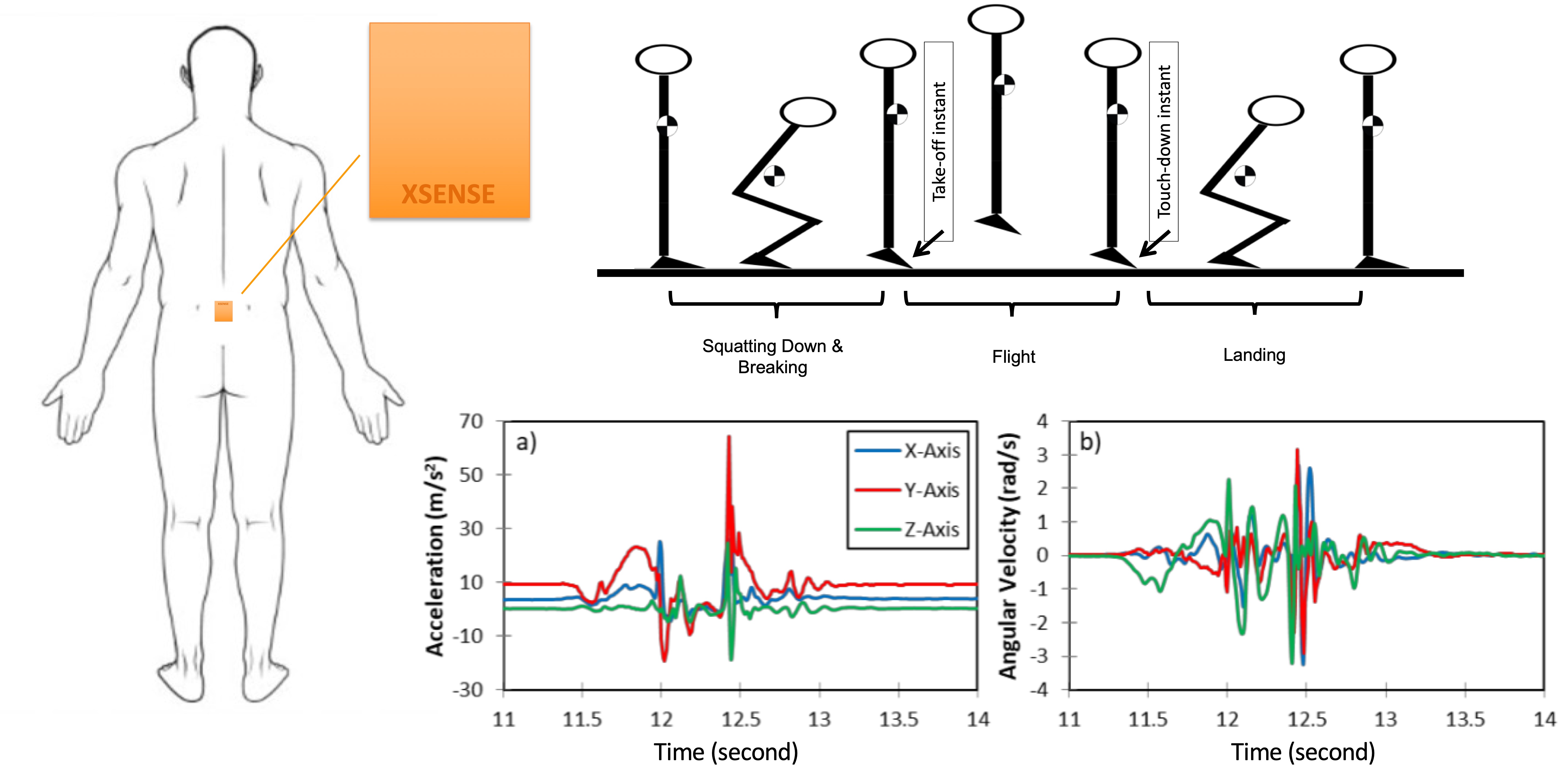
Abstract
The countermovement vertical jump height, flight time, and jump duration are used to assess athletic performance. Force-plate and motion-capture cameras are used to estimate these parameters, yet, their application is limited to dedicated lab environments. Despite the potential of inertial measurement units (IMU) for estimating the jump height, their accuracy has not been validated. This study investigates the accuracy of our proposed method to estimate the jump height using a sacrum-mounted IMU, during countermovement jumping. Eleven individuals performed four jumps each. To obtain the jump height, we transformed the IMU readouts into anatomical planes, and double-integrated the vertical acceleration after correction for zero velocity and vertical displacement. The accuracy of jump height obtained by IMU was compared to force-plate and motion-capture cameras during jumps without arm swing (mean error (standard deviation) of 0.3(2.2) cm and 1.0(3.0) cm, and correlation coefficient of 0.83 and 0.82, respectively) and during jumps with arm swing (-1.1(2.1) cm and 0.5(1.9) cm, and 0.92 and 0.89). The correlation coefficients were high, and the errors were comparable to the difference between the jump height obtained by force-plate and cameras. Therefore, a sacrum-mounted IMU can be recommended for in-field assessment of countermovement jump with and without arm swing.
Dataset Information

BibTeX
Fathian, Ramin, et al. "Assessment of countermovement jump with and without arm swing using a single inertial measurement unit." Sports Biomechanics (2022): 1-18.